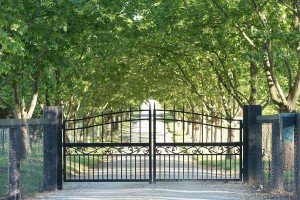What you Should Known About Ornamental Fences
For hundreds of years the ornamental fence has been making a statement to the world beyond the home it surrounded. Originally used as decorations for the wealthy and powerful, the decorative fences gradually moved into the upper-class homes as a boundary or means of keeping animals away from the vegetable garden. Now a sleek modern look is what comes to mind when you think of a small ornate decorative fence. With so many materials to select from, which one do you choose?
Wooden
Available in a wide variety of colors, sizes, and styles, the ornamental wooden fence is seen as the most traditionally American. The white picket fence with its evenly spaced boards is decorative and varies in heights from twelve inches to three feet.
Lattice fences and shadowbox fences are also included in this group, although they both are seen more as privacy fences. Larger in size, they are usually found at three feet and above. Both are great privacy barriers to a pool or garden and can be used in four to eight-foot “screen” sections of ornamental fence.
Wrought Iron
A low carbon iron alloy that has been used for hundreds of years, wrought iron is a traditional fencing material for ornamental fencing throughout the world. Although previously subject to rust and brittle oxidation, improvements in manufacturing have made it much more durable.
Vinyl
Vinyl picket fences are more common than you might think because they emulate ornamental wooden fences very closely. The vinyl fabric can be found in all sizes, shapes, and colors, and requires low maintenance. Additionally, the prefabricated pieces are quick to assemble.
Choices
An ornamental fence is meant to showcase a house. From picket fences to wrought iron decorative entries, these decorations make a statement about the people within the home they are protecting. Strong and durable, if you want to fence your property, the ornamental fence may be the right one for you.

